Ricardo Grando
UruBots Autonomous Cars Challenge Pro Team Description Paper for FIRA 2025
Jun 09, 2025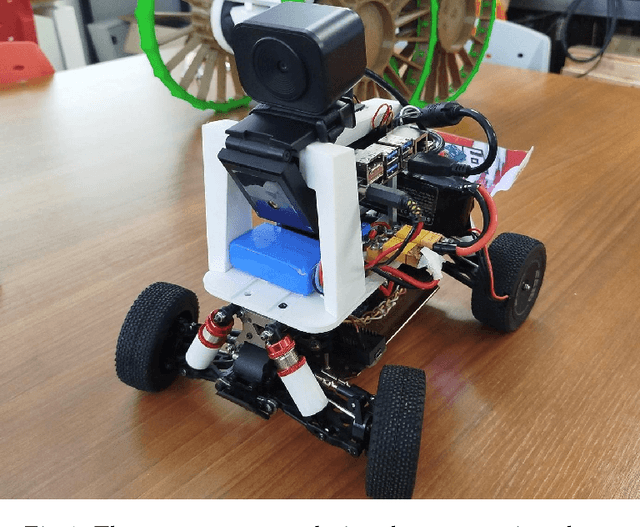
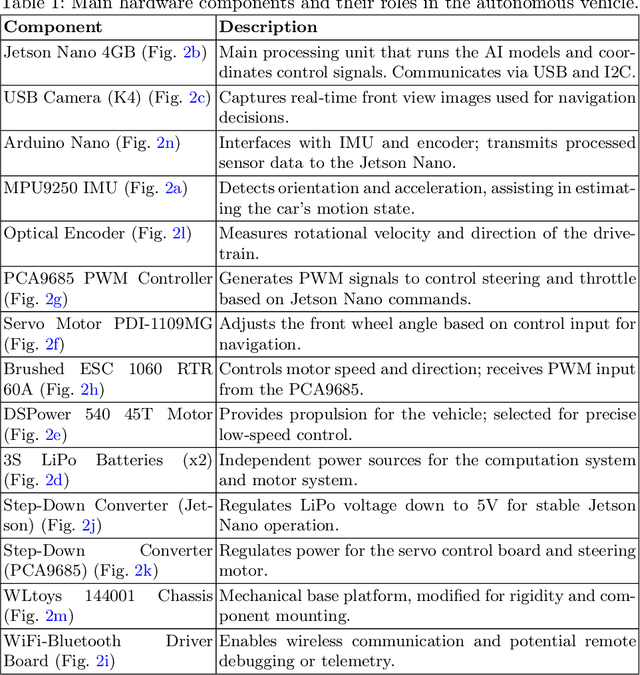
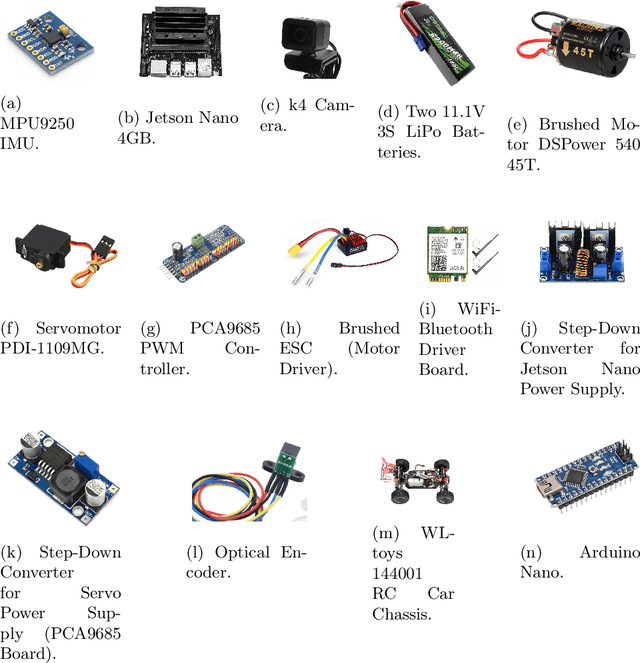
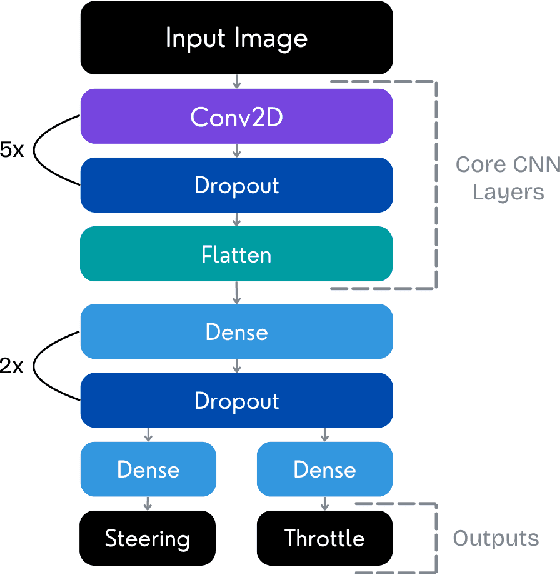
Abstract:This paper describes the development of an autonomous car by the UruBots team for the 2025 FIRA Autonomous Cars Challenge (Pro). The project involves constructing a compact electric vehicle, approximately the size of an RC car, capable of autonomous navigation through different tracks. The design incorporates mechanical and electronic components and machine learning algorithms that enable the vehicle to make real-time navigation decisions based on visual input from a camera. We use deep learning models to process camera images and control vehicle movements. Using a dataset of over ten thousand images, we trained a Convolutional Neural Network (CNN) to drive the vehicle effectively, through two outputs, steering and throttle. The car completed the track in under 30 seconds, achieving a pace of approximately 0.4 meters per second while avoiding obstacles.
RoboCup Rescue 2025 Team Description Paper UruBots
Apr 14, 2025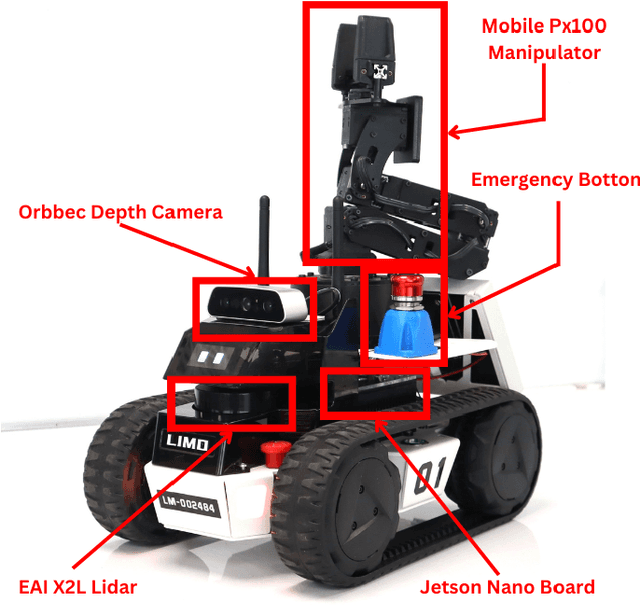
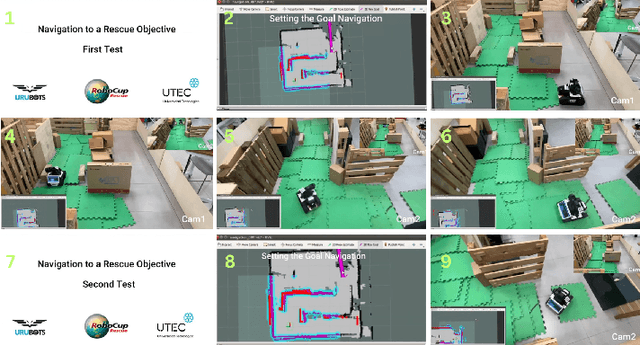
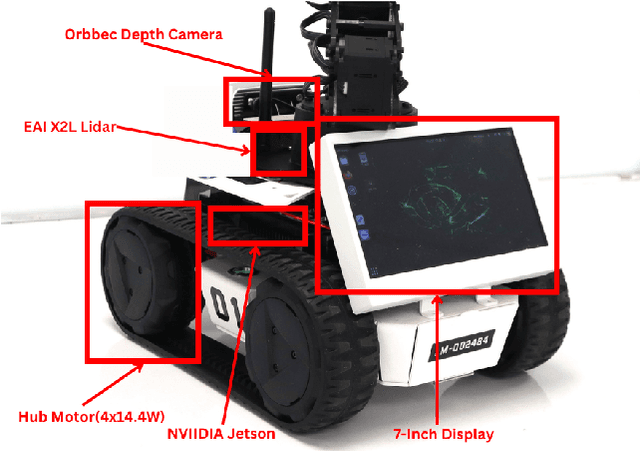
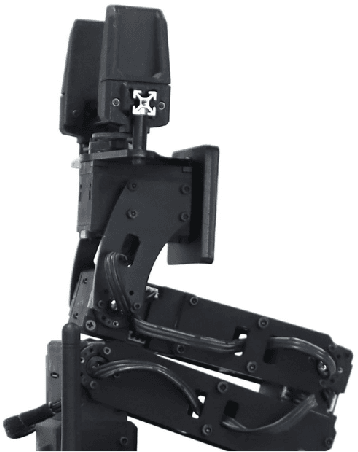
Abstract:This paper describes the approach used by Team UruBots for participation in the 2025 RoboCup Rescue Robot League competition. Our team aims to participate for the first time in this competition at RoboCup, using experience learned from previous competitions and research. We present our vehicle and our approach to tackle the task of detecting and finding victims in search and rescue environments. Our approach contains known topics in robotics, such as ROS, SLAM, Human Robot Interaction and segmentation and perception. Our proposed approach is open source, available to the RoboCup Rescue community, where we aim to learn and contribute to the league.
UruBots RoboCup Work Team Description Paper
Apr 13, 2025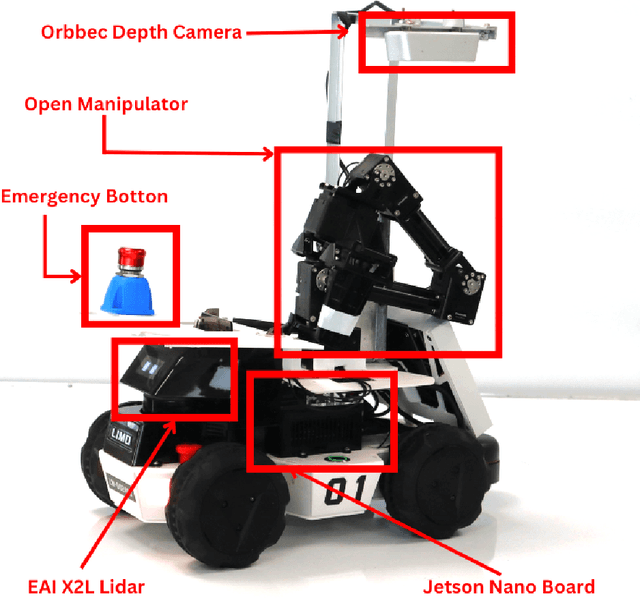
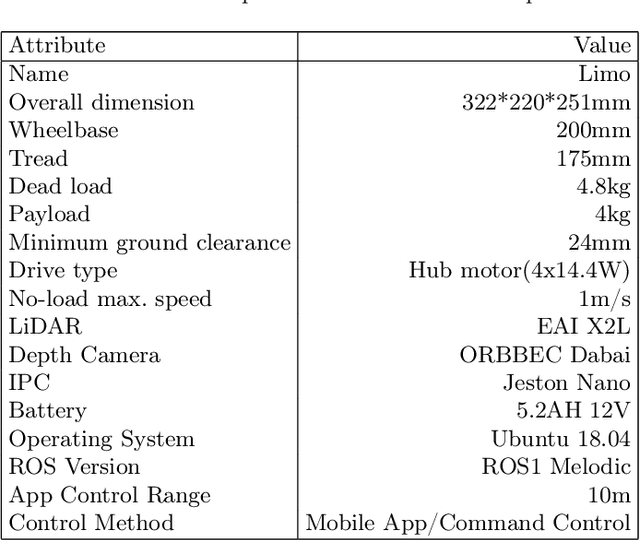
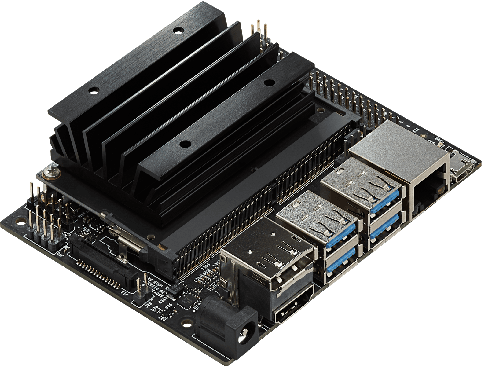
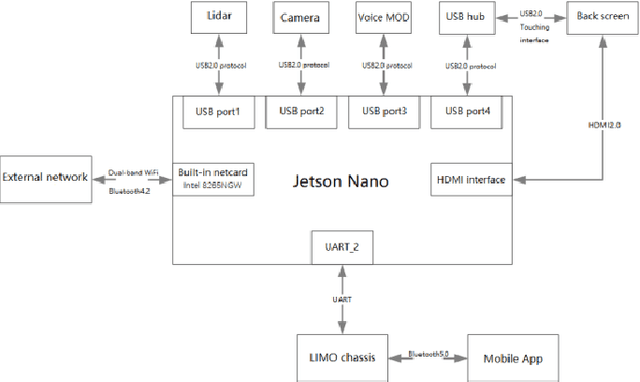
Abstract:This work presents a team description paper for the RoboCup Work League. Our team, UruBots, has been developing robots and projects for research and competitions in the last three years, attending robotics competitions in Uruguay and around the world. In this instance, we aim to participate and contribute to the RoboCup Work category, hopefully making our debut in this prestigious competition. For that, we present an approach based on the Limo robot, whose main characteristic is its hybrid locomotion system with wheels and tracks, with some extras added by the team to complement the robot's functionalities. Overall, our approach allows the robot to efficiently and autonomously navigate a Work scenario, with the ability to manipulate objects, perform autonomous navigation, and engage in a simulated industrial environment.
Implementación de Navegación en Plataforma Robótica Móvil Basada en ROS y Gazebo
Oct 25, 2024Abstract:This research focused on utilizing ROS2 and Gazebo for simulating the TurtleBot3 robot, with the aim of exploring autonomous navigation capabilities. While the study did not achieve full autonomous navigation, it successfully established the connection between ROS2 and Gazebo and enabled manual simulation of the robot's movements. The primary objective was to understand how these tools can be integrated to support autonomous functions, providing valuable insights into the development process. The results of this work lay the groundwork for future research into autonomous robotics. The topic is particularly engaging for both teenagers and adults interested in discovering how robots function independently and the underlying technology involved. This research highlights the potential for further advancements in autonomous systems and serves as a stepping stone for more in-depth studies in the field.
De la Extensión a la Investigación: Como La Robótica Estimula el Interés Académico en Estudiantes de Grado
Oct 22, 2024Abstract:This research examines the impact of robotics groups in higher education, focusing on how these activities influence the development of transversal skills and academic motivation. While robotics goes beyond just technical knowledge, participation in these groups has been observed to significantly improve skills such as teamwork, creativity, and problem-solving. The study, conducted with the UruBots group, shows that students involved in robotics not only reinforce their theoretical knowledge but also increase their interest in research and academic commitment. These results highlight the potential of educational robotics to transform the learning experience by promoting active and collaborative learning. This work lays the groundwork for future research on how robotics can continue to enhance higher education and motivate students in their academic and professional careers
UruBots UAV -- Air Emergency Service Indoor Team Description Paper for FIRA 2024
Jun 13, 2024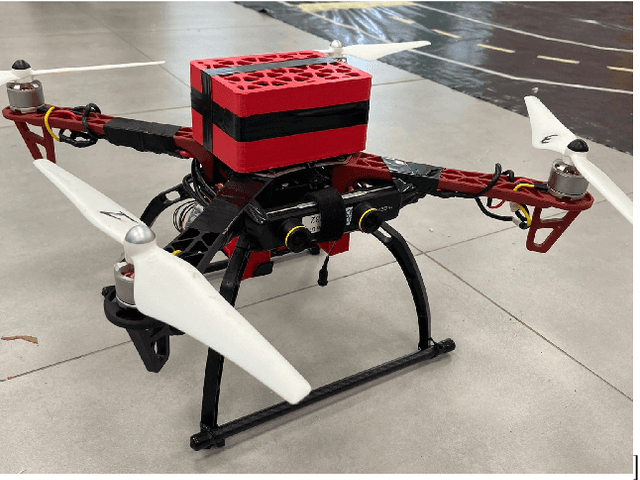
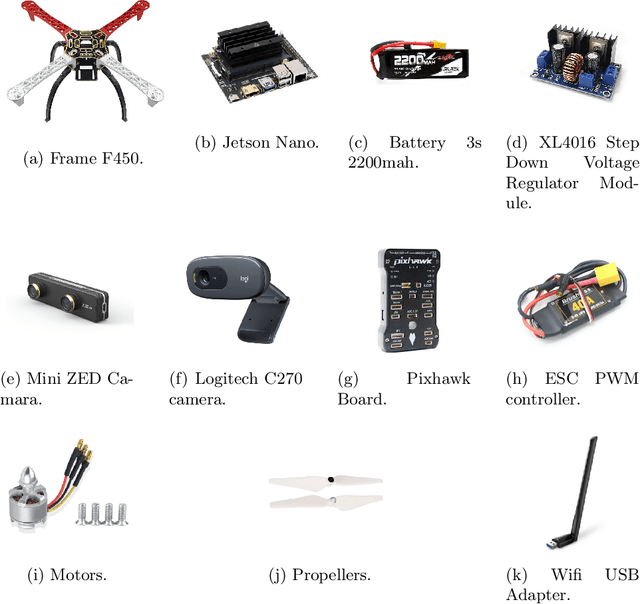
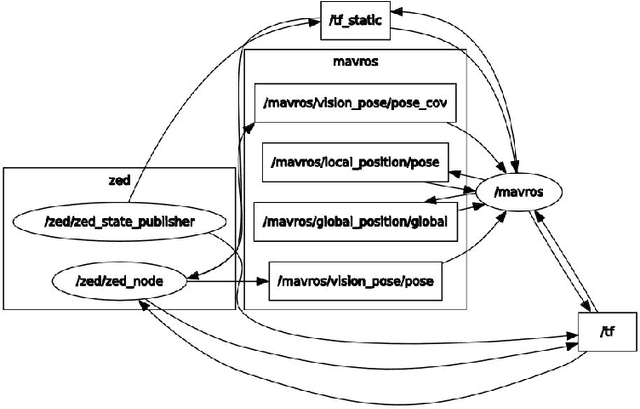

Abstract:This document addresses the description of the corresponding "Urubots" Team for the 2024 Fira Air League, "Air Emergency Service (Indoor)." We introduce our team and an autonomous Unmanned Aerial Vehicle (UAV) that relies on computer vision for its flight control. This UAV has the capability to perform a wide variety of navigation tasks in indoor environments, without requiring the intervention of an external operator or any form of external processing, resulting in a significant decrease in workload and manual dependence. Additionally, our software has been designed to be compatible with the vehicle's structure and for its application to the competition circuit. In this paper, we detail additional aspects about the mechanical structure, software, and application to the FIRA competition.
UruBots Autonomous Cars Team One Description Paper for FIRA 2024
Jun 13, 2024Abstract:This document presents the design of an autonomous car developed by the UruBots team for the 2024 FIRA Autonomous Cars Race Challenge. The project involves creating an RC-car sized electric vehicle capable of navigating race tracks with in an autonomous manner. It integrates mechanical and electronic systems alongside artificial intelligence based algorithms for the navigation and real-time decision-making. The core of our project include the utilization of an AI-based algorithm to learn information from a camera and act in the robot to perform the navigation. We show that by creating a dataset with more than five thousand samples and a five-layered CNN we managed to achieve promissing performance we our proposed hardware setup. Overall, this paper aims to demonstrate the autonomous capabilities of our car, highlighting its readiness for the 2024 FIRA challenge, helping to contribute to the field of autonomous vehicle research.
UruBots Autonomous Car Team Two: Team Description Paper for FIRA 2024
Jun 13, 2024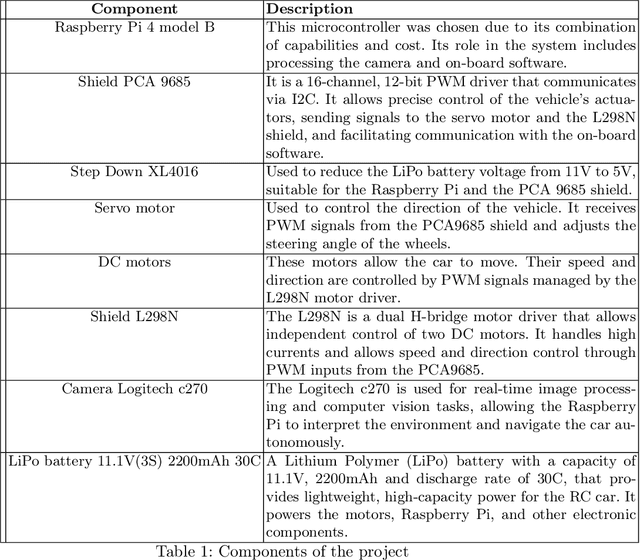
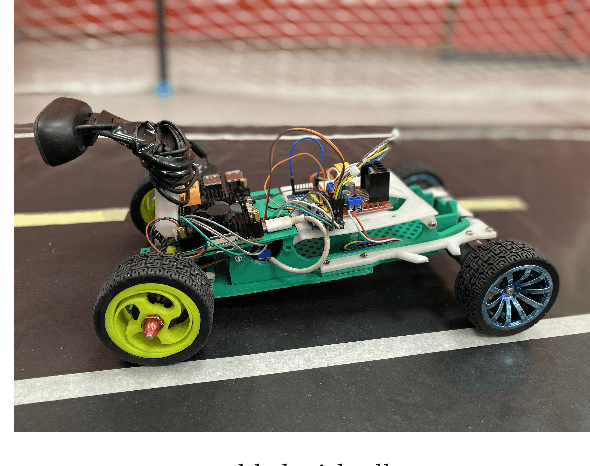
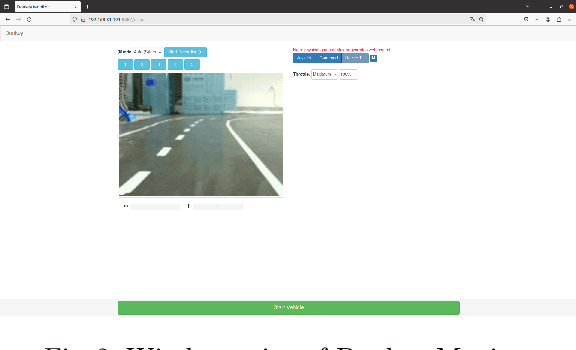
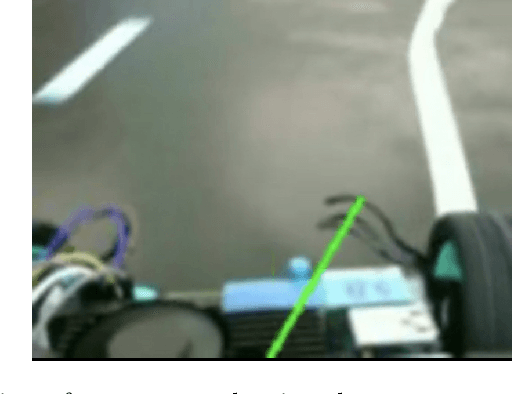
Abstract:This paper proposes a mini autonomous car to be used by the team UruBots for the 2024 FIRA Autonomous Cars Race Challenge. The vehicle is proposed focusing on a low cost and light weight setup. Powered by a Raspberry PI4 and with a total weight of 1.15 Kilograms, we show that our vehicle manages to race a track of approximately 13 meters in 11 seconds at the best evaluation that was carried out, with an average speed of 1.2m/s in average. That performance was achieved after training a convolutional neural network with 1500 samples for a total amount of 60 epochs. Overall, we believe that our vehicle are suited to perform at the FIRA Autonomous Cars Race Challenge 2024, helping the development of the field of study and the category in the competition.
Diseno y Desarrollo de Prototipos Roboticos para Competencias de Futbol utilizando Motores Dynamixel
Oct 25, 2023Abstract:This article describes the design and development of robotic prototypes for robotic soccer competitions using Dynamixel motors. Although the prototypes are not aimed at world-class competitions, they represent a significant step in the development of sports robots. Model XL430-W250 Dynamixel motors were chosen and electronic circuits were implemented using control boards such as OpenCR and Raspberry Pi 3. A crucial component was introduced: a step-up board that charges a capacitor to create a powerful kick to the ball via anelectromagnet controlled by Arduino Nano. The programming and coordination of the prototypes was carried out using the ROS environment (Robot Operating System), which allows effective integration of movements and communication. Although the prototypes were not optimized for global competition, they underwent extensive testing, evaluating their speed and maneuverability, as well as soccer tactics in the GRSim simulator. These prototypes contribute to the further development of sports robotics and illustrate the research potential in this exciting area.
Aplicacion de Robots Humanoides como Guias Interactivos en Museos: Una Simulacion con el Robot NAO
Oct 25, 2023Abstract:This article presents an application that evaluates the feasibility of humanoid robots as interactive guides in art museums. The application entailes programming a NAO robot and a chatbot to provide information about art pieces in a simulated museum environment. In this controlled scenario, the learning employees interact with the robot and the chatbot. The result is a skilled participation in the interactions, along with the effectiveness of the robot and chatbot that communicates the basic details of the art objects. You see natural and fluid interactions between the students and the robot. This suggests that the addition of humanoid robots to museums may provide a better experience for visitors, but also the need to continue to do more to optimize the quality of interaction. This study contributes to understanding the possibilities and requirements of applying humanoid technologies in a cultural context.
 Add to Chrome
Add to Chrome Add to Firefox
Add to Firefox Add to Edge
Add to Edge